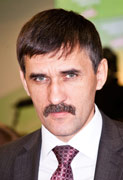|
|
|
Pavlova V.S., Tretyakova N.V.
EDUCATIONAL AND PROFESSIONAL ACTIVITIES MOTIVATION OF A FUTURE SPECIALIST IN THE AGRICULTURAL SECTOR [№ 2 ' 2025]
Currently, the development of students’ educational and professional motivation can be considered as one of the leading areas in the educational activities of branch universities. Higher educational institutions of agricultural orientation are no exception, as the emergence of new technologies in agricultural production creates new conditions and imposes requirements on university graduates: knowledge in the field of innovative technologies and technology, the ability to introduce new technologies into agricultural production, skills to optimize and improve the work of agricultural enterprises. In this regard, the development of the professionalism of a future specialist in the agricultural sector should be considered by analyzing his interest in the chosen profession. Therefore, for universities that train professional personnel for the agro-industrial complex of the country, the main task remains the need to design and implement activities in higher education that promote students’ sustainable interest in their future profession, as well as awareness of its importance in society and focus on professional activities. In the process of studying the development of motivation for educational and professional activities among students, significant factors have been identified, in particular, their understanding and awareness of the importance of their profession and their interest in learning, which generally affect the success of vocational training. The article presents the results of a study aimed at analyzing the level of motivation of educational and professional activities of agricultural university students studying in the field of training 35.03.06 “Agroengineering”. The obtained research results suggest the need for targeted systematic work to develop the motivation of educational and professional activities of students of an agricultural university throughout the entire learning process. The practical significance of the results obtained lies in the possibility of organizing the educational process, taking into account the nature of students’ motives for the development of motivation for the educational and professional activities of future specialists in the agricultural sector.
Orehova T.F., Fedorov V.A., Tretyakova N.V.
DETERMINING THE ORIGINALITY OF THE DISSERTATION TEXT USING ANTI-PLAGIARISM SYSTEMS: OPPORTUNITIES FOR IMPROVING THE METHODOLOGY [№ 4 ' 2024]
The problem of proving the originality of the text of the dissertation research, associated with the use of software tools for detecting text borrowings – the anti-plagiarism system, is one of the most urgent today. The purpose of the research is to develop and substantiate a method of expert processing of the results of the examination of the dissertation in the anti-plagiarism system. The method will improve the methodology for determining the originality of a scientific text, taking into account the degree of reflection of scientific results in the press determines. The article suggests a way to establish the total originality of the text of the dissertation research and the completeness of the reflection of scientific results in print. The proposed calculation makes it possible to equate the “self-citation” and “self-borrowing” identified by the anti-plagiarism system to the original text. This will resolve the contradiction between the requirement of the Higher Attestation Commission Regulations to present the main scientific results of the dissertation research in peer-reviewed scientific publications and the requirements of dissertation councils to ensure a high proportion of the originality of the scientific text when checking by the anti-plagiarism system, while “self-citation” is not equated with “originality” and is not taken into account.
Tretyakova E.A.
ANALYSIS OF NON-CONTEMPORANEOUS RUSSIAN TRANSLATIONS OF "MIDDLEMARCH" (BY G. ELIOT) FROM THE VIEWPOINT OF DISCOMFORT STYLISTICS [№ 11 ' 2012]
The paper is devoted to comparative analysis of two Russian translations of the novel "Middlemarch" by G. Eliot. The purpose of the analysis is to reveal the difference in the two translation strategies and compare the results of their implementation from the reader's perspective. We have analyzed non-contemporaneous translations, which made it possible to study the issues from the diachronic approach. We have also used the basic terminology, principles and methods of discomfort stylistics for proper identification and description of the linguistic phenomena that may result in the reader's misunderstanding of a translated text.
Tretiakova A.S., Mukhin V.A.
FLORA OF RAILWAY COMMUNICATIONS OF THE MIDDLE URAL [№ 4 (app.1) ' 2006]
|
|

Editor-in-chief |
Sergey Aleksandrovich
MIROSHNIKOV |
|
|


















